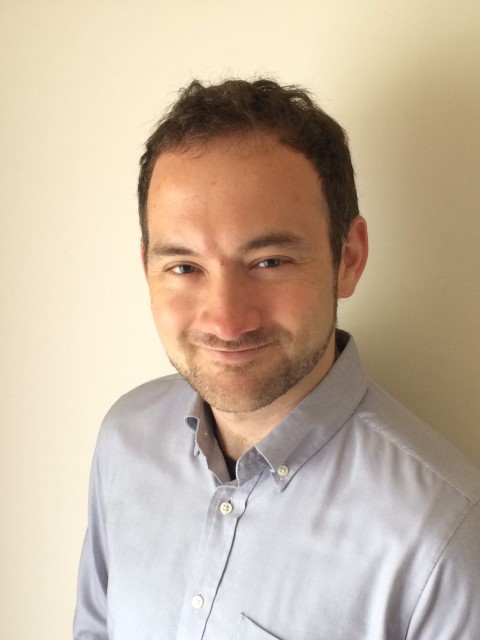2022 Regeneron 科学奖决赛 洛杉矶三华生入围竞争180万奖金
世界新闻网
01/20/2022
享有「少年诺贝尔奖」美誉的2022雷杰纳隆科学奖(Regeneron Science Talent Search 2022)40名决赛选手(Finalist)名单20日公布, 洛杉矶地区有三位华裔生入围,将在 3 月 10 日至 16 日为期一周的决赛中,角逐前十名次,竞争总额超过 180 万美元的奖学金。

洛杉矶地区入围决赛的华裔学生和科研项目如下:
王语安(Ethan Wong),亚凯迪亚高中(Arcadia HS),项目名称「采用新型制造技术构建钟形升力分布的飞机偏航特性」(Yaw Characteristics of Aircraft With a Bell-Shaped Lift Distribution Built With a Novel Manufacturing Technique)。

江天琪(Theodore Jiang),洛杉矶Palisades Charter高中,项目名称「破译遗传变异的语言:使用Ttransformer语言模型来识别与人类遗传疾病和癌症相关的致病性错义突变」(Deciphering the Language of Genetic Variants: Using a Transformer-Based Language Model to Identify Pathogenic Missense Mutations Associated With Human Inherited Diseases and Cancer)。

Vivien He,派洛斯福德半岛高中(Palos Verdes Peninsula HS),项目名称「Qube:用于现场和区域地震预警的低成本物联网设备」(Qube: A Low-Cost Internet-of-Things Device for On-Site and Regional Earthquake Early Warning)。
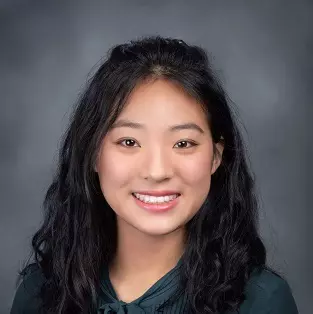
由科学学会(Society for Science)主办的Regeneron STS科学奖,是美国历史最久和最负盛名的高中生科学和数学竞赛,表彰少年学子在科学数学领域取得的杰出成就。今年南加州三位入选决赛的华裔学生,分别来自洛杉矶地区的公立高中,他们的研究领域涵盖生物医学、人工智能、互联网络、工业制造等,成为美国未来的高新科技的希望。
Forty Accomplished Young Scientists Named Finalists in the 2022 Regeneron Science Talent Search
Over $3 Million to be Awarded in Oldest and Most Prestigious U.S. STEM Competition for High School Seniors
01/20/2022
TARRYTOWN, N.Y. and WASHINGTON, Jan. 20, 2022 /PRNewswire/ — Regeneron Pharmaceuticals, Inc. (NASDAQ: REGN) and Society for Science (the Society) today named 40 finalists in this year’s Regeneron Science Talent Search, the nation’s oldest and most prestigious science and math competition for high school seniors. Program alumni include recipients of the world’s most coveted science and math honors, including 13 Nobel Prizes and 22 MacArthur Foundation Fellowships, as well as the founders of many important science-based companies, including Regeneron.

The 2022 finalists’ research projects span a diverse range of STEM-related subjects, showcasing a breadth of knowledge and depth of passion for science. Multiple students chose to explore the wide-ranging impact of COVID-19; for instance, one studied the effect of pandemic-related economic hardship on marital functioning, and another evaluated SARS-CoV-2 respiratory droplet spread to better inform public safety measures. Some students invented novel therapeutic tools, like a mind-controlled prosthetic limb and a device for rehabilitating stroke victims, while others explored topics related to climate change, including a new method for sustainable biofuels production. Still others dove into social and political issues, including an examination of voting behavior in the United States and influencer advertising on Instagram.
“We are excited to welcome an exceptional group of Regeneron Science Talent Search 2022 finalists and continue our tradition of supporting the next generation of scientific leaders,” said George D. Yancopoulos, M.D., Ph.D., Co-founder, President and Chief Scientific Officer of Regeneron, and a 1976 Science Talent Search finalist and winner. “Competing in the Science Talent Search was life-changing for me, and helped give me the inspiration and confidence to devote myself to a life of using science to help fight disease. We look forward to seeing how this year’s finalists, with their demonstrated perseverance and creativity, continue to harness the power of science to address the many challenges facing society, and improve the lives of people around the world.”
The finalists were chosen based on their projects’ scientific rigor and their potential to become world-changing scientists and leaders. They were selected from 300 scholars, named earlier this month by Regeneron and the Society for Science. The scholars were chosen from a pool of over 1,800 highly qualified entrants, all of whom completed an original research project and extensive application process.
“Congratulations to the Regeneron Science Talent Search 2022 finalists,” said Maya Ajmera, President and CEO of Society for Science, Publisher of Science News and 1985 Science Talent Search alum. “This year’s finalists have shown resilience and dedication in the face of so many obstacles in their educational pursuits. From the COVID pandemic to the harsh realities of climate change, these students have demonstrated their leadership and commitment to STEM innovation. As our world continues to heal and find ways forward, these students will be the key to solving global challenges not only today, but in the future.”
Finalists will participate in a week-long competition from March 9-16, 2022, where they will undergo a rigorous judging process and compete for more than $1.8 million in awards. They will also have an opportunity to interact with leading scientists and share their research during a virtual “Public Day” event on March 13.
The finalists are each awarded at least $25,000, and the top 10 awards range from $40,000 to $250,000. The top 10 Regeneron Science Talent Search 2022 winners will be announced during a live-streamed awards ceremony on March 15. In total, more than $3 million in awards will be distributed throughout the Regeneron Science Talent Search, which includes awards to finalists as well as $2,000 provided to each of the top 300 scholars and their schools. Award winners use the prize money to advance their education and scientific research – a critical investment toward their future in STEM, and our country’s future as a hub of innovation and progress.
Regeneron Science Talent Search 2022 Fast Facts
- The Regeneron Science Talent Search 2022 finalists represent 37 schools across 19 states. They are competing for more than $1.8 million, with a top prize of $250,000.
- Forty finalists were selected from 300 scholars and 1,804 entrants based on the originality and creativity of their scientific research, as well as their achievement and leadership both inside and outside of the classroom.
- Finalist projects cover disciplines of science including animal science, behavioral and social sciences, bioengineering, cellular and molecular biology, chemistry, computational biology and bioinformatics, computer science, engineering, environmental science, genomics, materials science, mathematics, medicine and health, physics, plant sciences and space science.
- For a list of this year’s finalists, visit https://www.societyforscience.org/regeneron-sts/2022-finalists/.
About the Regeneron Science Talent Search
The Regeneron Science Talent Search, a program of Society for Science since 1942, is the nation’s oldest and most prestigious science and math competition for high school seniors. Each year, nearly 2,000 student entrants submit original research in critically important scientific fields of study and are judged by leading experts in their fields. Unique among high school competitions in the U.S. and around the world, the Regeneron Science Talent Search focuses on identifying, inspiring and engaging the nation’s most promising young scientists who are creating the ideas that could solve society’s most urgent challenges.
In 2017, Regeneron became only the third sponsor of the Science Talent Search in order to help reward and celebrate the best and brightest young minds and encourage them to pursue careers in STEM that positively impact the world. Through its 10-year, $100 million commitment, Regeneron nearly doubled the overall award distribution to $3.1 million annually, increasing the top award to $250,000 and doubling the awards for the top 300 scholars and their schools to $2,000 each to inspire more young people to engage in science.
Program alumni include recipients of the world’s most coveted science and math honors, including 13 Nobel Prizes, 11 National Medals of Science, six Breakthrough Prizes, 22 MacArthur Foundation Fellowships and two Fields Medals, as well as the founders of many important science-based companies, including Regeneron.
Learn more at https://www.societyforscience.org/regeneron-sts/.
About Society for Science
Society for Science is dedicated to the achievement of young scientists in independent research and to public engagement in science. Established in 1921, the Society is a nonprofit whose vision is to promote the understanding and appreciation of science and the vital role it plays in human advancement. Through its world-class competitions, including the Regeneron Science Talent Search, the Regeneron International Science and Engineering Fair, the Broadcom MASTERS, and its award-winning magazine, Science News and Science News for Students, Society for Science is committed to inform, educate, and inspire. Learn more at www.societyforscience.org and follow us on Facebook, Twitter, Instagram and Snapchat (Society4Science).
About Regeneron
Regeneron (NASDAQ: REGN) is a leading biotechnology company that invents life-transforming medicines for people with serious diseases. Founded and led for 30 years by physician-scientists, our unique ability to repeatedly and consistently translate science into medicine has led to nine FDA-approved treatments and numerous product candidates in development, nearly all of which were homegrown in our laboratories. Our two most senior leaders, Leonard Schleifer, M.D., Ph.D., and George Yancopoulos, M.D., Ph.D., credit their experiences at the Science Talent Search for putting them on a path to start the company and ultimately, along with their team, invent important, life-changing medicines. Our medicines and pipeline are designed to help people with eye diseases, allergic and inflammatory diseases, cancer, cardiovascular and metabolic diseases, pain, hematologic conditions, infectious diseases and rare diseases.
Regeneron believes that operating as a good corporate citizen is crucial to delivering on our mission. We approach corporate responsibility with three goals in mind: to improve the lives of people with serious disease, to foster a culture of integrity and excellence and to build sustainable communities. Regeneron is proud to be included on the Dow Jones Sustainability World Index and the Civic 50 list of the most “community-minded” companies in the U.S. Throughout the year, Regeneron empowers and supports employees to give back through our volunteering, pro-bono and matching gift programs. Our most significant philanthropic commitments are in the area of science education, including the Regeneron Science Talent Search and Regeneron International Science and Engineering Fair.
For additional information about the company, please visit www.regeneron.com or follow @Regeneron on Twitter.
Media Contacts
Ella Campbell, Regeneron
914-572-4003, ella.campbell@regeneron.com
Gayle Kansagor, Society for Science
703-489-1131, gkansagor@societyforscience.org
百人会报告:过半在美华人科学家”感到恐惧”
文章来源: 澎湃新闻
10/29/2021
当地时间10月28日,美国华人组织百人会和亚利桑那大学共同发起的一项研究显示,50.7%的在美华人教授与研究人员对自己受到美国政府的监视感到相当恐惧和焦虑。
“从这项研究中可以看出,美国的华人科学家和研究人员与非华人相比,由于种族主义的影响,两方对他们的工作有着截然不同的体验。种族歧视、刻板观念、仇外心理和政府政策在此之中都在起作用。”研究主要作者、亚利桑那大学教育学院高等教育研究中心教授珍妮·李(Jenny J. Lee)说。
该研究为了探寻美国学术领域中存在的种族问题,尤其是在中美两国的学术交流合作受政治纷争影响下美国华人教授和研究人员的处境。研究对美国顶尖的院校和研究机构包括教师、博士后、研究生在内的1949名华人和非华人科学家进行了一次全国性的随机调查。
研究显示,美国华人和非华人科学家都认识到华人科学家的价值,并支持与中国的合作。美国96.8%的华人科学家和93.6%的非华人科学家相信华人科学家对美国的研究和教学项目做出了重要贡献。
42.2%的华人科学家感到被美政府以种族原因区别对待。与此同时,只有8.6%的非华人科学家有这种感觉。38.4%的华人科学家由于其种族/族裔/原籍国的原因,在美国获得研究项目的资金时遇到更多困难,而非华人科学家中只有14.2%的受访者如此认为。
50.7%的华人科学家对自己被美国政府监视感到相当恐惧和焦虑,非华人科学家中只有11.7%。
39.7%的华人科学家认为美国应该对中国采取更强硬的态度,以防止知识产权被盗,而非华人科学家这样认为的却有74.8%。
调查数据还显示,美国政府的“中国行动计划 ”(China Initiative)正在非华人科学家中营造恐惧氛围。科学家们说,他们切断了与中国合作者的联系,不再雇用中国博士后,并限制了与中国学者的交流。
华人科学家在调查中表示,他们故意不为项目争取联邦资金,因为他们担心会受到更严格的审查,这可能会导致项目规模缩小,以及工作资源减少。华人科学家也开始考虑在美国以外不那么敌对的环境中工作,这可能会影响人才的去留。目前,美国国内来自中国的国际研究生人数已经在下降。
“美国是全球科学研究的领导者,但对华人科学家的怀疑使进步和交流变得更加困难.” 美国百人会总裁黄征宇就此指出。
Scientists’ fears of racial bias surge amid US crackdown on China ties
Poll shows that researchers of Chinese descent worry about surveillance by the US government and have stepped back from collaborations in China.
By Nidhi Subbaraman
10/29/2021

The US government’s search for spies in laboratories and businesses has stoked fear among scientists of Chinese descent and damaged collaborations with researchers in China, according to a survey of nearly 2,000 scientists.
“There was a lot of broad speculation about this idea,” says Jenny Lee, a social scientist at the University of Arizona in Tucson, who studies research collaborations and geopolitics. Lee is one of the co-authors of the survey and related report. “What we wanted to do was actually seek out the evidence.”
The China Initiative, launched under former US president Donald Trump, has led to several well-publicized arrests of scientists since 2018, often over links to collaborators or institutions in China. The US government has said the goal of the effort is to stop the theft of US trade secrets by the Chinese government.
But civil-rights groups and individual researchers have warned that the US government’s scrutiny of scientists under this programme has hampered valuable scientific collaborations with researchers in China. They have also warned that researchers of Chinese descent feel unduly scrutinized because of their race and ethnicity, which amounts to racial profiling.
“We’ve seen anecdotal evidence about the chilling effects of the China Initiative,” says Ashley Gorski, a senior staff attorney at the American Civil Liberties Union in New York City. “The study makes clear that the effects are far-reaching.”
Far-reaching effects
Between May and July 2021, 1,949 scientists working in the United States participated in the survey, the results of which were released on 28 October in a white paper. The project was supported by the Committee of 100, an organization of Chinese American leaders in New York City. Of the respondents, one-third identified as being of Chinese descent. About 40% were not Chinese, and one-quarter did not report their racial or ethnic background.
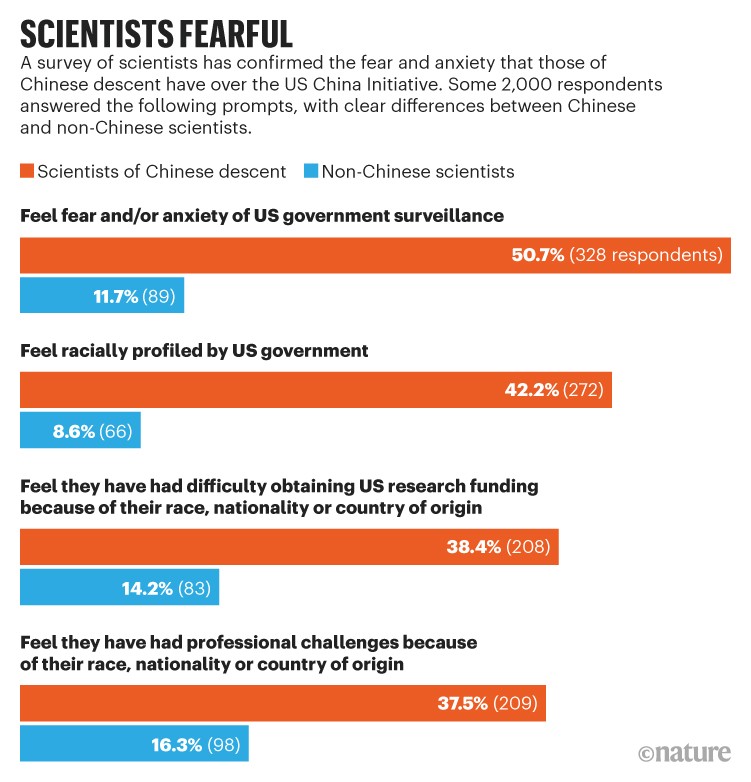
About half of the scientists of Chinese descent reported experiencing “considerable” fear, anxiety or a mixture of both that they are being surveilled by the US government. Only 12% of non-Chinese scientists reported that concern (see ‘Scientists fearful’). A little more than 42% of scientists of Chinese descent reported feeling racially profiled by the US government, compared with 9% of non-Chinese scientists.
More scientists of Chinese descent than others said they feel it is harder to obtain research funding because of their race or ethnicity, and feel they face professional challenges for similar reasons. (The US National Science Foundation in 2019 funded 21% of Asian applicants’ grants, compared with 29% of white applicants. In 2020, the US National Institutes of Health funded 27% of Asian applicants, compared with 31% of white applicants.)
“The differences are undeniable in ways that are quite profound for those of Chinese descent,” Lee says.
Andrea Liu, a physicist at the University of Pennsylvania in Philadelphia, is disappointed by the large disparities recorded by the survey in the attitudes of Chinese versus non-Chinese scientists. “It is difficult for me to see how anyone who is following the news on the China Initiative could fully support all the investigations,” she says. “We still have quite a bit of work to do to educate our non-Chinese colleagues on what has been happening.” Liu is working with the American Physical Society (APS) — a membership-based professional organization of some 55,000 physicists, based in College Park, Maryland — to help researchers to understand the US government’s shifting research- security requirements.
Among survey participants who said they conducted research involving China within the past 3 years, about 23% of scientists of Chinese descent said they decided to stop collaborations with researchers in China, whereas only 10% of other respondents said the same.
Lee cautions that the data are probably an underestimate. In response to the survey, some researchers of Chinese descent e-mailed to ask whether it was a surveillance ploy by the US Federal Bureau of Investigation, which has been responsible for investigations under the China Initiative. “There was suspicion that this would be used as a trap by the FBI to identify scientists who are working with China,” Lee says. “What this also tells us is that the problems are likely much worse than being reported.”
Calls grow louder
Justice-department officials in place during Trump’s administration said that the focus of the China Initiative was not on the ethnicity or race of individuals, but rather on people’s activity and behaviour. Earlier this year, US President Joe Biden’s attorney general, Merrick Garland, said the US government will fight espionage from China while preserving the civil rights of people of Asian descent in the United States.
Meanwhile, calls from scientific groups to end the China Initiative as it was conceived have grown louder. In September, 177 faculty members from Stanford University in California sent a letter to Garland asking that the China Initiative be stopped. Faculty members from other top universities backed that call. Also that month, the APS wrote to Biden’s science adviser, Eric Lander, and to Garland, asking that the government change its approach, including renaming the initiative.
The preliminary results of a poll run in September by the APS, surveying 3,200 physicists and students, echo the findings of Lee and her colleagues. The group reports that 40% of foreign early-career researchers visiting the United States to study or work said that the country’s approach to research security made them less likely to stay in the country long term. Foreign researchers are a key part of the US workforce in science and engineering fields.
“The irony is that in an attempt to compete with China, this is actually undermining our efforts,” Lee says.
无罪!华裔教授胡安明重返大学教职,并被补偿薪水
来源: 华人生活网
10/20/2021
田纳西大学诺克斯维尔分校近日恢复了华裔教授胡安明的终身教职。
胡安明此前被指在接受NASA资助的同时隐藏了与中国高校的关系,不过最终获法官宣布胡安明无罪。

报道称,在一封10月14日的信中,副校长John Zomchick向胡安明提供了终身教职的工程教授职位。
校方同时还向他补偿薪水,并为他支付了移民律师费用。
另外,校方还为胡安明提供3年共计20万元的资金,助他重新启动研究。
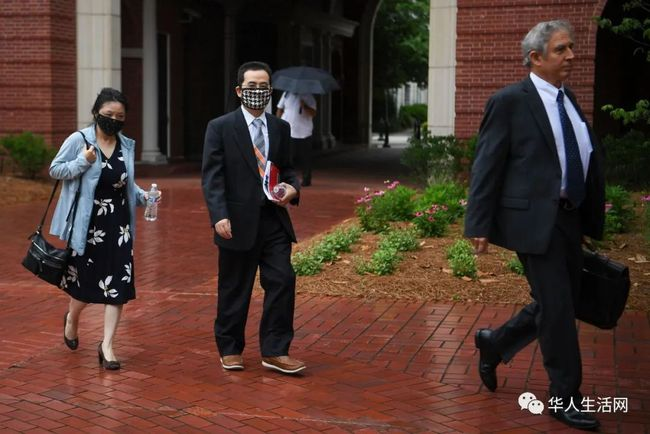
报道称,在信中,Zomchick向胡安明解释了校方对他在签证方面的支持。胡安明是归化加拿大国籍的华裔。
2020年2月,胡安明被逮捕并被起诉欺诈和做虚假陈述。该案是时任总统川普任内美国司法部打击与外国有联系的学者行动的一部分。
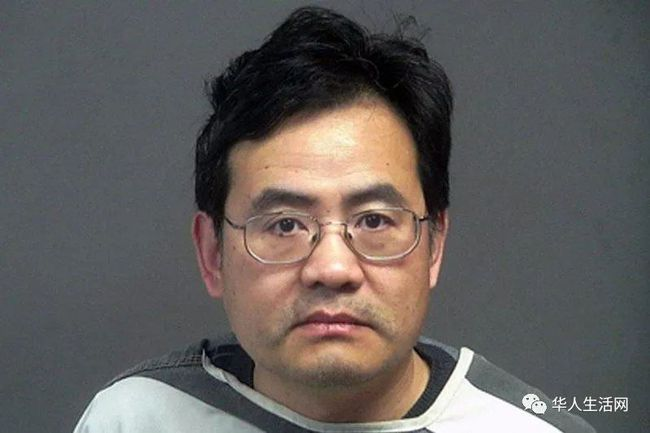
检方指胡安明在申请NASA资金时故意隐瞒在他国大学任职的情况,并认为这违反了法律。胡安明的律师则称,胡安明认为没有必要将一个暑期兼职的工作作为披露信息的一部分,校方也没有要求他这样做。
今年6月,该案陪审团成员无法达成一致意见,案件流审。检方曾表示打算重新起诉,但法官上个月判胡安明无罪。
法官在判决中指出,就算胡安明有意隐瞒了他与他国大学的关系,也没有证据显示他打算伤害NASA的利益。
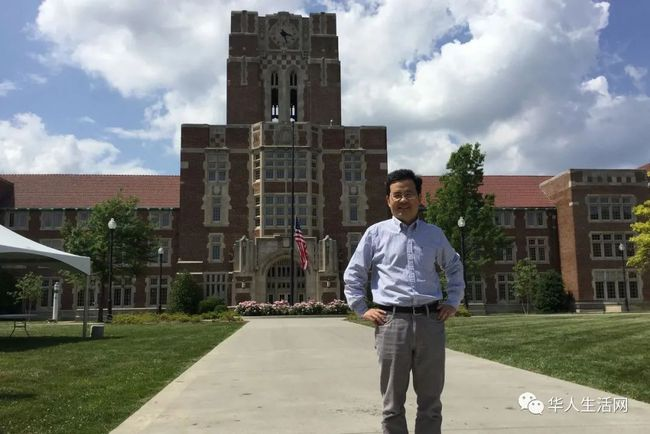
法官指出,NASA确实拿到了它们为之提供资金的研究成果,也没有证据显示胡安明从其它国家收钱了,或者任何在外国人参与了该研究。
美“中国行动计划”首案落定:华人教授胡安明被宣判无罪
澎湃新闻
9/10/2021
美国当地时间9月9日,因“间谍案”而被审查的田纳西大学诺克斯维尔分校华人教授胡安明在美国法庭获得历史性意义的“胜利”,法官宣判胡安明无罪,对他的所有指控均不成立。
在9日发布的一份52页的裁决中,美国地方法院法官Thomas Varlan 宣布胡安明无罪,称大学管理研究奖励的规则令人困惑,检察官没有提供任何证据证明胡安明有意欺骗提供资金的美国国家航空航天局。
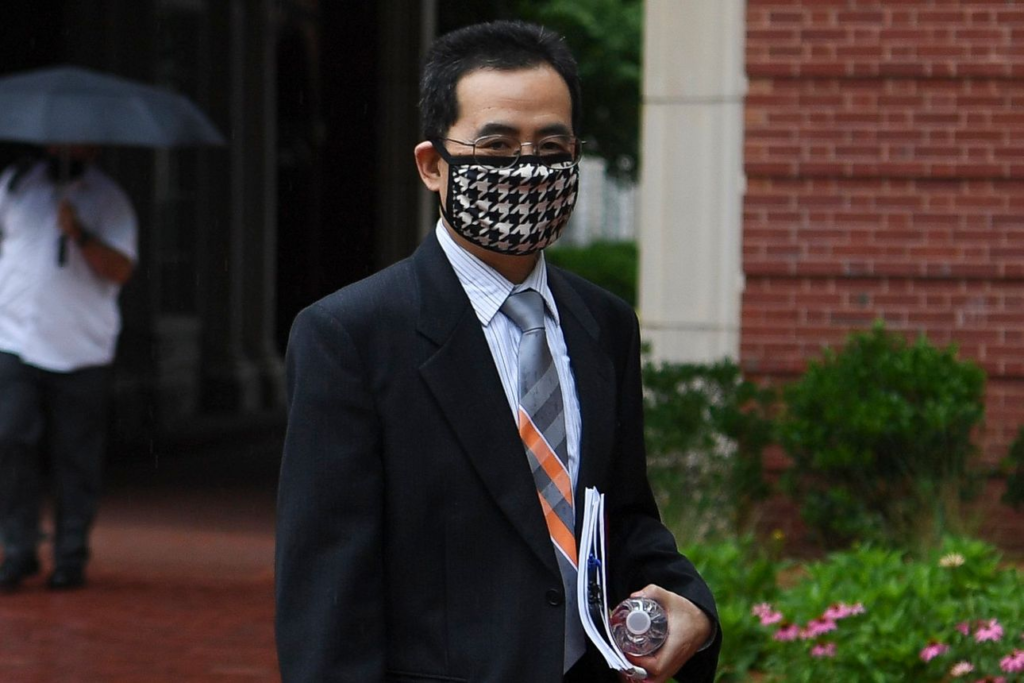
此前,胡安明教授同时也是美国宇航局(NASA)的研究员,于2020年2月因未能在递交给田纳西大学的利益冲突表格上披露与中国一所大学的关系而受到联邦政府起诉,被指控犯有电信欺诈罪和虚假陈述罪。
该案件被美国司法部列入“中国行动计划”(“China Initiative”)内,该计划宣称打击经济间谍活动,已针对亚裔特别是华裔科学家、研究人员和学者展开了大规模的调查。
但政府对胡安明的指控并不涉及经济间谍活动,也无任何“间谍活动”的证据。
此次判决使得胡安明教授的案件成为该计划下第一个被审判,也是第一个被判无罪的案件。

据《华尔街日报》报道,6月17日,由于陪审团围绕胡安明是否为获得美国政府研究经费而隐瞒其在中国的工作这一问题僵持不下,一名联邦法官宣布该案的审理无效。
检方指控称,在填写田纳西大学的利益冲突表格时,以及在申请NASA经费之时,胡安明没有报告他在中国的工作,误导了他所在的大学和美国政府。
胡安明在庭审中作证说,他认为自己在中国的职位属于一份暑期工作,只是每年花费几周时间的兼职,不适用美国学校的利益冲突准则,所以不需要披露。
美国联邦政府大约在三年前开始执行的“中国行动计划”意在阻止向中国转移商业机密和其他专有信息的行动,针对胡安明的诉讼就是其中的一部分。这项行动的重点之一是那些接受美国政府资助并在中国开展工作或交流的驻美研究人员,美国政府称这些研究工作可能有意或无意地涉及了尖端专有技术的转移。
然而过去两年,联邦检察官显然升级了这些行动并将指控进一步扩大化,许多被指控的学者专家坚称是清白的,认为自己被起诉是美国政府对中国充满敌意的大环境下的“受害者”。
获悉判决结果后,美国司法部发言人说: “尊重法院的决定,尽管我们对结果感到失望。”
熟悉该案的人士对澎湃新闻(www.thepaper.cn)表示,司法部对胡安明的指控不仅断送了他的职业生涯,在2020年2月被起诉后,胡安明丢掉了他在田纳西大学的工作,也对他和他家人的生活造成了极大的伤害。自从他被软禁以后,他的健康也进一步恶化,但尽管如此,他仍在与这场不公正的待遇作斗争。
“我对他的勇气非常钦佩,因为如果这场官司他输了的话,将要坐非常长的牢。他对自己充满信心,觉得没有做过这样的事情,才会坚持把官司打到底。最后的结果也证明了美国的司法制度还是有公正的地方。”美国达拉斯得州大学的前副校长冯达旋对澎湃新闻说。
法官做出这一裁决之际,美国司法部正面临来自代表亚裔美国人和国会一些民主党人的越来越多的批评,指责司法部在调查美国拨款项目中是否存在欺诈行为的指控时,不公平地针对华裔学者。
今天,联邦法院的判决使得胡安明教授获得了来之不易的“清白”。
Chinese researcher accused of spying under China Initiative acquitted of charges
Shawna Chen
9/10/2021

A federal judge on Thursday acquitted Chinese Canadian researcher Anming Hu of all fraud charges, bringing to a close the government’s controversial first trial under the Justice Department’s China Initiative.
Why it matters: The case drew attention after it ended in a mistrial and heightened the scrutiny surrounding the DOJ initiative, which faces accusations that it leads to racial profiling against Asians in the U.S.
Context: The FBI spied on Hu and his family for nearly two years. Even though agents implicated Hu as having ties to the Chinese military in meetings with Hu’s bosses at the University of Tennessee at Knoxville, they could not confirm claims of spying.
- The nanotechnology specialist was instead charged with fraud for allegedly concealing part-time work for a Chinese university to secure federal funding, though UTK officials testified that they knew of the connection.
Asian American civil rights groups and lawmakers praised the acquittal.
- “Dr. Hu is finally free to return to his life and be reunited with his family,” John C. Yang, president and executive director of Asian Americans Advancing Justice | AAJC, said in a statement. But the “scars of the prosecution and investigation on Dr. Hu and his family are deep and long-lasting.”
- Rep. Ted Lieu (D-Calif.), who has led efforts calling for a probe into the China Initiative, addressed the DOJ on Twitter: “You should stop discriminating against Asians … If Hu’s last name was Smith, you would not have brought this case.”
- “We must work vigilantly to ensure that what happened to Dr. Hu and his family does not happen again to anyone,” Yang added.
BLAVATNIK FAMILY FOUNDATION, NEW YORK ACADEMY OF SCIENCES NAME 31 FINALISTS FOR 2021 BLAVATNIK NATIONAL AWARDS FOR YOUNG SCIENTISTS
NEW YORK | June 15, 2021
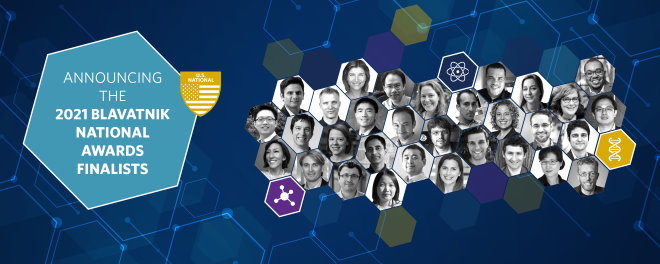
Showcasing America’s most promising young scientists and engineers, the Blavatnik Family Foundation and the New York Academy of Sciences today named 31 finalists for the world’s largest unrestricted prize honoring early-career scientists and engineers.
Three winners of the Blavatnik National Awards for Young Scientists – in life sciences, chemistry, and physical sciences and engineering – will be announced on July 20, each receiving $250,000 as a Blavatnik National Awards Laureate.
The finalists, culled from 298 nominations by 157 United States research institutions across 38 states, have made trailblazing discoveries in wide-ranging fields, from the neuroscience of addiction to the development of gene-editing technologies, from designing next-generation battery storage to understanding the origins of photosynthesis, from making improvements in computer vision to pioneering new frontiers in polymer chemistry. Descriptions of the honorees’ research are listed below.
“Each day, young scientists tirelessly seek solutions to humanity’s greatest challenges,“ said Len Blavatnik, founder and chairman of Access Industries, and head of the Blavatnik Family Foundation. “The Blavatnik Awards recognize this scientific brilliance and tenacity as we honor these 31 finalists. We congratulate them on their accomplishments and look forward to their continued, future discoveries and success.”
President and CEO of the New York Academy of Sciences Nicholas B. Dirks said: “Each year, it is a complete joy to see the very ‘best of the best’ of American science represented by the Blavatnik National Awards Finalists.”
“On behalf of the New York Academy of Sciences, we are extremely proud to administer the Blavatnik National Awards. This prize honors scientists at a pivotal career juncture, where support and recognition can make a huge impact on their career and their potential for future innovations and discoveries,” he said.
Three highly respected independent juries – each representing one of the awards’ categories – will determine the winning Laureates, who must be faculty-level scientific researchers and engineers 42 years of age or younger.
The Blavatnik Awards for Young Scientists will celebrate the 2021 Blavatnik National Awards honorees in a ceremony on Sept. 28 at the American Museum of Natural History in New York.
About the Blavatnik Awards for Young Scientists
The Blavatnik Awards for Young Scientists, established by the Blavatnik Family Foundation in the U.S. in 2007 and independently administered by the New York Academy of Sciences, began by identifying outstanding regional scientific talent in New York, New Jersey and Connecticut. The Blavatnik National Awards were first awarded in 2014 and, in 2017, the Awards were expanded to honor faculty-rank scientists in the United Kingdom and in Israel. By the close of 2021, the Blavatnik Awards will have awarded prizes totaling $11.9 million. Sixty-one percent of all Award recipients are immigrants to the country in which they were recognized and hail from 47 countries across six continents, reflecting the Blavatnik Family Foundation’s recognition that important science is a global enterprise. For updates about the Blavatnik Awards for Young Scientists, please visit www.blavatnikawards.org follow on Twitter and Facebook @BlavatnikAwards.
About the Blavatnik Family Foundation
The Blavatnik Family Foundation is an active supporter of world-renowned educational, scientific, cultural and charitable institutions in the United States, the United Kingdom, Israel, Russia and other countries throughout the world. The foundation is headed by Len Blavatnik, a global industrialist and philanthropist and the founder and chairman of Access Industries, a privately held industrial group based in the U.S. with global strategic interests. Visit www.accessindustries.com or www.blavatnikfoundation.org.
Media contact
Kamala Murthy
kmurthy@nyas.org
212-298-3740
The 2021 Blavatnik National Awards Finalists
2021 Blavatnik National Awards Finalists in Life Sciences
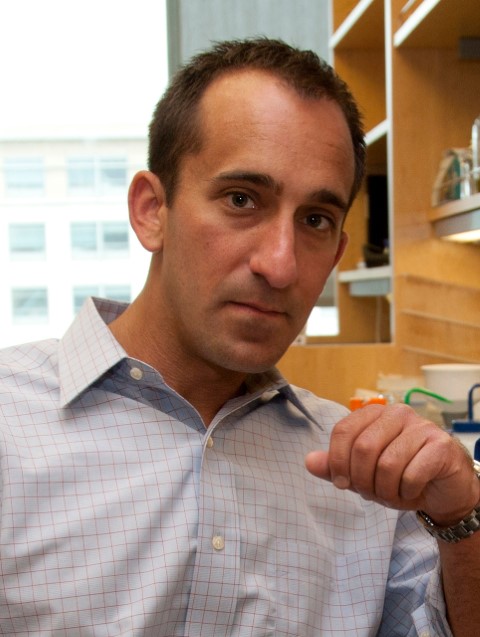
Michael Fischbach, Stanford University
Symbiotic microbes have a remarkable talent for modulating their host’s biology. The bacterial communities in humans, such as those in the gut, are associated with diseases such as Crohn’s and diabetes. Microbiologist, Michael Fischbach, Ph.D., systematically profiles small molecules produced by bacteria that mediate the interactions between the microbiome and its host. His development of novel genetic systems has uncovered genes in a specific bacterial species found on the skin, which produces a molecule with antibiotic properties. Fischbach’s research offers new insights into how the microbiome can impact our immune system at the molecular level.

Viviana Gradinaru, California Institute of Technology
Because most medications cannot cross the blood-brain barrier to enter the brain, treating certain neurological diseases requires invasive surgery to deliver drugs directly to the brain. Neurotechnologist Viviana Gradinaru, Ph.D., has developed techniques to bypass this barrier by engineering harmless viruses that are administered inside the body intravenously. These systemic viruses cross the blood-brain barrier and deliver cargo such as genes or gene editing tools to treat neurological diseases. Gradinaru has also used her drug delivery system to target problems in the peripheral nervous system and neurons located in the gut that may cause or contribute to Parkinson’s disease. This work strives to discover unexpected sources and noninvasive treatments for multiple neurological diseases.
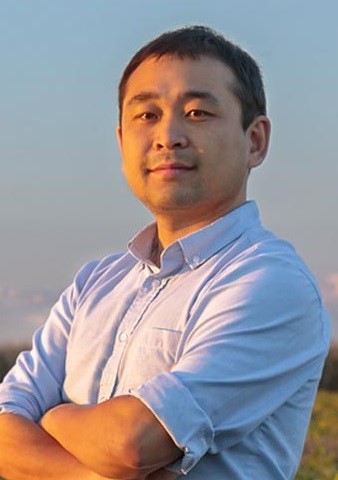
Kaiyu Guan, University of Illinois at Urbana-Champaign
Novel sensing and modeling technologies developed by environmental scientist Kaiyu Guan, Ph.D., are revolutionizing how we monitor agricultural productivity and sustainability. Guan’s satellite- and supercomputer-enabled technology measures and predicts photosynthesis, crop water and nitrogen use, and crop yield. His innovations can generate daily “views” of every farm on the planet going back 20 years so that farmers can manage their fields for water and nutrient needs. The technology also allows to accurately monitor environmental footprints and carbon emissions. Guan’s data collection techniques are incredibly economical and scalable. Guan’s technologies enable weather-forecasting-like abilities to predict field-level agroecosystem insights and can promote “precision agriculture” to guide farming practices as farmers encounter and adapt to climate change.
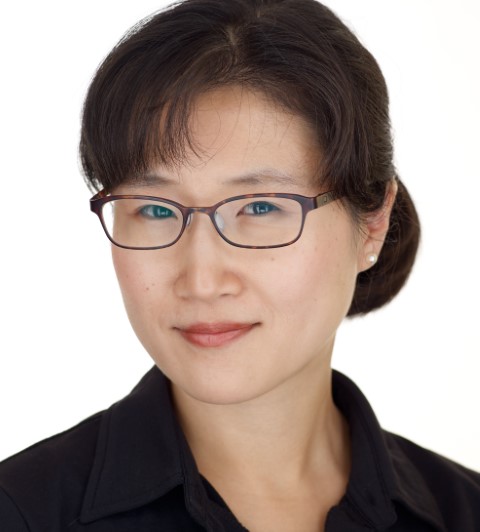
Sun Hur, Boston Children’s Hospital
To trigger an immune response when a virus like COVID-19 enters the body, cells must discriminate between the RNA they naturally produce and the foreign RNA inserted by the virus. Immunologist Sun Hur, Ph.D., discovered how cells perform this discriminatory evaluation using proteins called RIG-I–like receptors. If they determine that the RNA is from a virus, the receptors send a signal to the cell to alert the neighbors and immune system of a viral infection. Sun also found that if this process goes awry, the body can enter a state of constant inflammation, causing inflammatory diseases such as Aicardi-Goutières Syndrome. Her research is providing insight into healthy immune responses as well as ones that go awry.

Houra Merrikh, Vanderbilt University
Antimicrobial resistance is a global health crisis and searching for new antibiotic drugs appears to be a losing strategy. Because bacteria evolve and build resistance to these new drugs, regardless of their potency or mechanism, we desperately require entirely new solutions. Houra Merrikh, Ph.D., has discovered a potentially transformative solution: prevent and even reverse bacterial evolution. Merrikh found that bacteria produce a particular protein that promotes the development of antimicrobial resistance, and she has identified drugs that can prevent this protein from forming. By stopping bacterial evolution, bacteria remain susceptible to antibiotics to which they would have otherwise developed resistance.
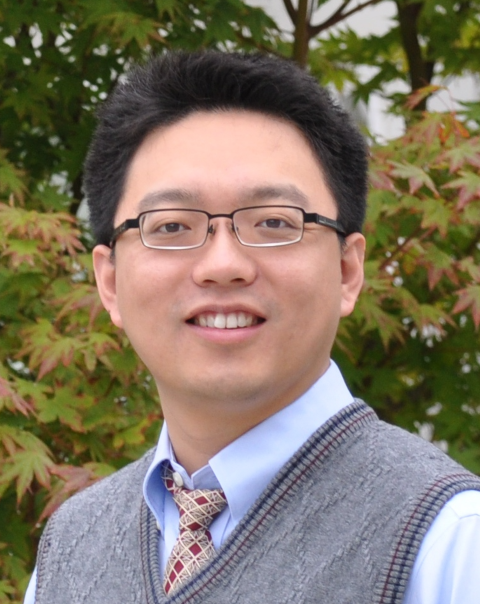
Stanley Qi, Stanford University
CRISPR technology has become well known as a technological breakthrough to edit genes. Stanley Qi, Ph.D., is a bioengineer pushing CRISPR technology to new limits beyond editing. Qi helped create a technology called CRISPR interference and CRISPR activation, known as CRISPRi/a. CRISPRi/a interacts with DNA to silence or activate specific genes, without altering the DNA sequence, which creates the ability to change stem cells into therapeutic cells such as neurons. He has modified CRISPR as an imaging tool to capture real-time “movies” of the dynamic process of gene transcription and the movement of chromosomes. Qi’s transformation of traditional CRISPR into an antiviral therapy shows promise to treat COVID-19 and the flu.
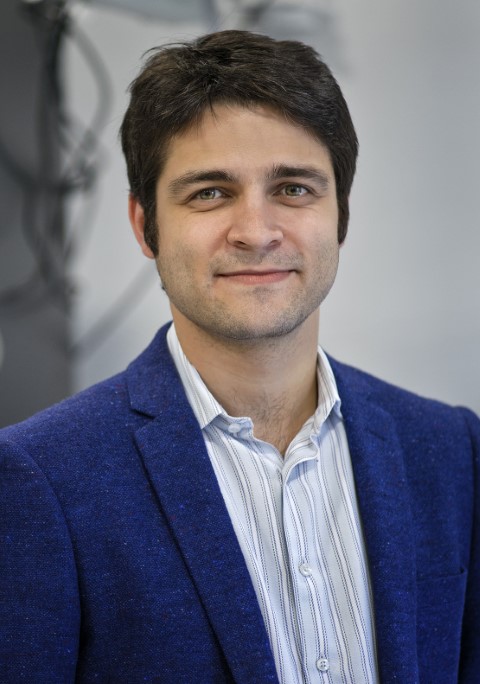
Mikhail G. Shapiro, California Institute of Technology
The lack of suitable technologies to noninvasively image and control cellular function inside a living body is a massive limitation for studying, diagnosing, and treating a wide range of diseases. Mikhail G. Shapiro, Ph.D., is a biochemical engineer who has created groundbreaking technologies using sound waves and magnetic fields to visualize and control certain cellular functions, such as gene expression. He has designed cells that can make air-filled structures made of proteins known as gas vesicles. Shapiro can image, track, and control cell functioning inside living animals and patients by manipulating the gas vesicles and other proteins. This innovative combination of ultrasound and biomolecules has the potential to improve imaging technology for diagnosing cancer and even activate neurons noninvasively.
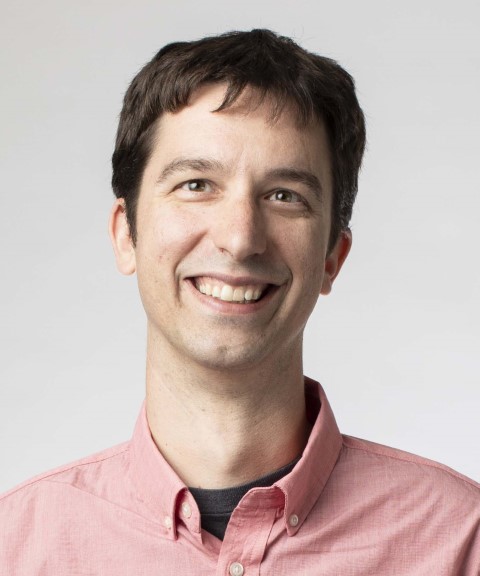
Peter Turnbaugh, University of California, San Francisco
Scientists have made considerable progress toward understanding how diet and genetics drive varying responses to drugs. However, research has ignored how our “second genome”—the trillions of microorganisms that thrive in and on the body—can alter a human’s response to drugs. Peter Turnbaugh, Ph.D., is a microbiologist tackling this complex issue. He examines how specific gut bacterial species can metabolize drugs, potentially reducing the amount of drug available to the body. This process goes both ways. Turnbaugh found that drugs meant to target mammalian cells can have unanticipated effects on the gut microbiome. Understanding the reciprocal activity between gut bacteria and its host will be critical to design effective drugs that have minimal impact on the microbiome.

Kay M. Tye, Salk Institute for Biological Studies
Problems in processing reward, fear, and learning can cause a range of psychiatric disorders. Neuroscientist Kay M. Tye, Ph.D., investigates the neural circuitry that drives these emotions and cognitive abilities to understand addiction and depression. She discovered a neural pathway that underlies an animal’s willingness to engage in compulsive, reward-seeking behaviors despite negative consequences—a pattern observed in binge-eating and alcohol use disorders. This neural circuitry could be a target for therapeutic interventions. Tye’s addiction research identified a collection of neurons that serve as a biomarker that predicts whether an animal will develop compulsive binge-drinking behavior, even before being exposed to alcohol.
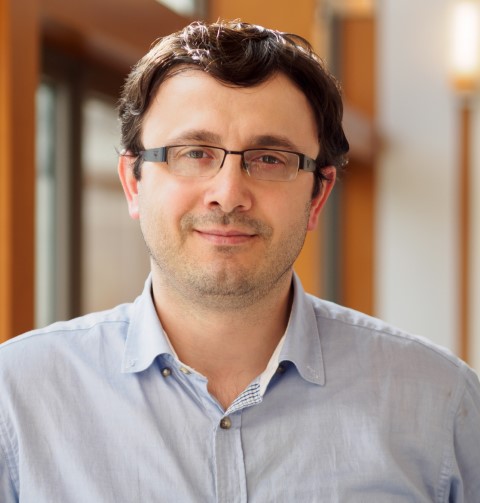
Ahmet Yildiz, University of California, Berkeley
Cells rely on molecular motors to transport proteins and other cellular components throughout the cell. These “motors” travel along a collection of molecular roadways known as the cytoskeleton. Defects in molecular motor proteins, like dynein, can cause neurodegenerative diseases such as ALS. Through his ingenious combination of molecular imaging and single-molecule measurements, molecular biologist Ahmet Yildiz, Ph.D., discovered how dynein takes steps on the cytoskeleton and generates forces to carry its cargoes. Using his innovative tools, he revealed how dynein achieves unidirectional movement and uncovered essential molecules that activate and regulate dynein motility in cells. This research provides insight into potential treatments for neurodegenerative diseases.
2021 Blavatnik National Awards Finalists in Chemistry
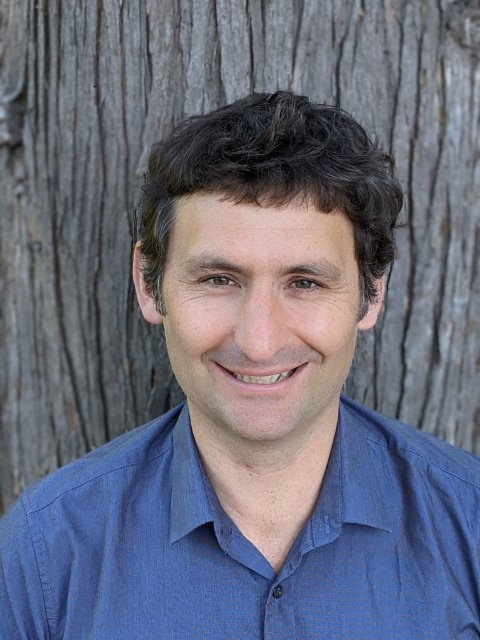
Shannon Boettcher, University of Oregon
To make industry and energy production sustainable, scientists must find new ways to convert and store energy and produce basic chemicals from renewable sources. Shannon Boettcher, Ph.D., is a rising leader in the field of electrochemistry. Using electrochemical processes to make our industrial economy greener, he has advanced technology that turns simple mixtures of water and atmospheric gases into hydrogen fuel, plastics, chemicals, and fertilizer. Boettcher has developed new approaches to understand catalysts that split water into clean oxygen and hydrogen fuel and uncovered materials with record performance for the oxygen evolution reaction, research that contributes to a future independent of fossil fuels.
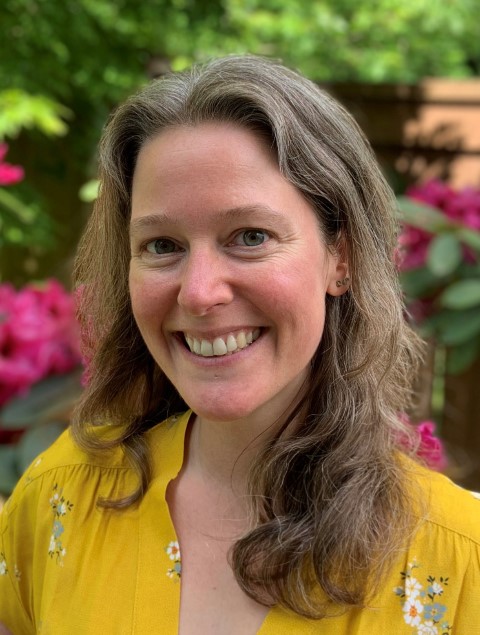
Brandi Cossairt, University of Washington
The nanoscale is an exciting frontier in science. Synthetic chemist Brandi Cossairt, Ph.D., is helping lead the charge to understand how nanomaterials form, grow, and behave. Cossairt has harnessed surface chemistry to functionalize, protect, and enhance nanoparticles, and created a set of predictive principles that could accelerate the development of nanotechnology based on simple and scalable solution-processed materials. The impact of Cossairt’s work can already be seen in toxic elements being removed from television displays and LEDs, and in improved nanoparticle catalysis for the production of fuels and fertilizers. Looking further into the future, Cossairt is designing generalizable methods to create large networks of linked nanoparticles and hybrid nanoparticle materials that could exhibit powerful new functionality.
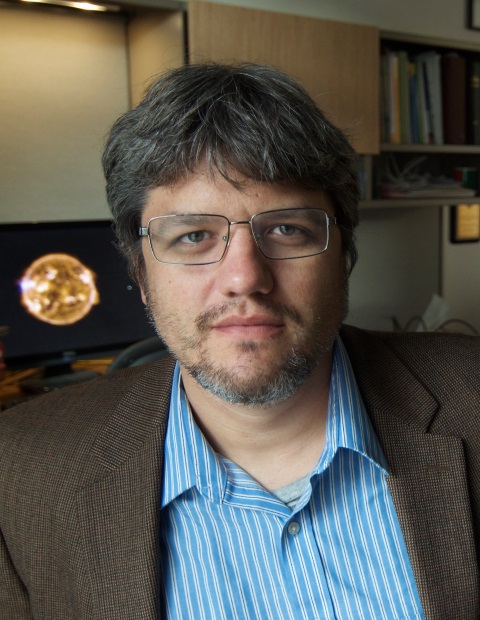
Paul Dauenhauer, University of Minnesota, Twin Cities
Chemical engineer Paul Dauenhauer, Ph.D., is pioneering ways to synthesize consumer chemicals from sustainable raw materials. Today, many commonplace materials like cleaning supplies or plastics are made from fossil fuels. Dauenhauer is seeking to replace fossil fuels with glucose, a simple sugar from plants. Through this transformative line of research, Dauenhauer has achieved high-yield production of detergents, plastics, and synthetic rubber from glucose, all performing as well as conventionally sourced products. Beyond his green synthesis methods, Dauenhauer is also forging new paths in energy storage, developing a foundational catalyst theory to store energy in the form of ammonia.
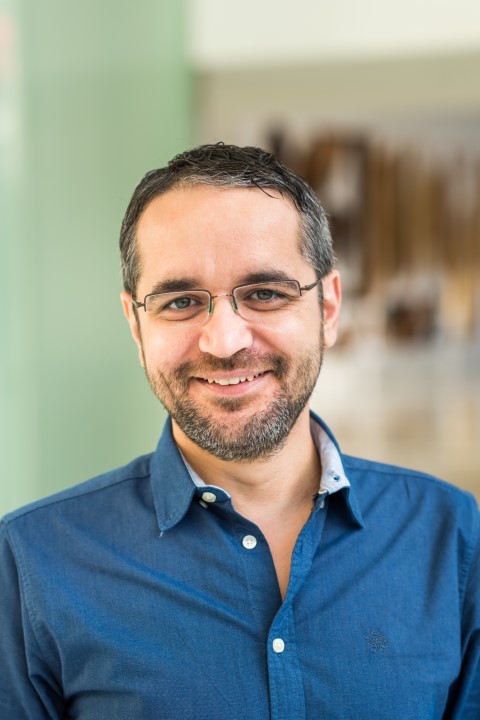
Mircea Dincă, Massachusetts Institute of Technology
Most materials that conduct electricity are densely packed metals. Inorganic chemist Mircea Dincă, Ph.D., has proven that certain porous materials—metal-organic frameworks (or MOFs)—can also conduct electricity and be used in fuel cells and supercapacitors, which play critical roles in green technology systems. Taking inspiration from how individual molecules can conduct electricity, Dincă achieved a conducting MOF by weaving a network of conducting molecules into a porous solid. Dincă has operated his MOFs as supercapacitors and can retain performance after repeated use, an essential property for their use in commercial products. Dincă is partnering with Lamborghini to incorporate MOFs for energy storage in future electric supercars.
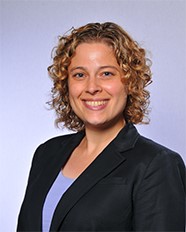
Danna Freedman, Northwestern University
The second quantum revolution brings the promise of incredibly powerful technological tools, with quantum computers and sensors customized to specific tasks. Inorganic chemist Danna Freedman, Ph.D., studies quantum bits (or qubits, the building blocks of quantum computers) based on specific properties of individual molecules. Molecules are uniquely well-suited for a bespoke quantum system: tuning their atomic composition and structure adjusts their performance. Freedman has elevated molecular qubits to the cutting edge of quantum information science, having achieved record stability and demonstrating optical read-out of a molecular qubit state. Freedman has also pushed new frontiers in material synthesis: she has achieved never-before-seen compounds using extremely high pressures. Freedman is opening up new possibilities to design materials for specific functions by making many more combinations of elements possible.
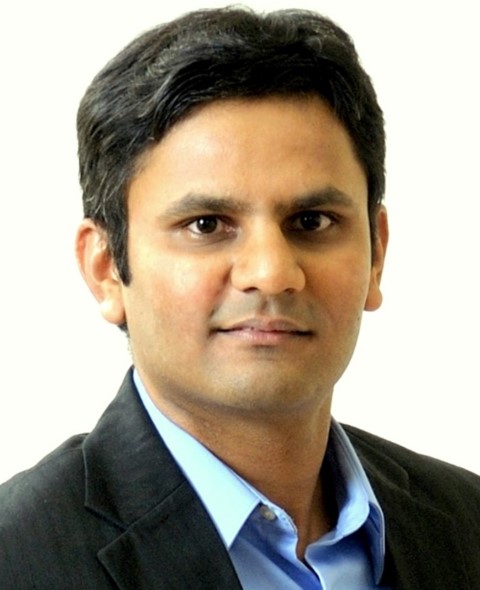
Prashant K. Jain, University of Illinois at Urbana-Champaign
Prashant K. Jain, Ph.D., a physical chemist, is unlocking more potential functions from some of the most common catalysts, such as iron or platinum, by using gold nanoparticles to harvest energy from light. Shining light on gold nanoparticles creates synchronized vibrations of electrons, called plasmons, within the gold. Jain has discovered that these plasmons concentrate light and trigger new chemical reactions that would not otherwise occur using the catalysts alone. Using this phenomenon, he has developed “plasmonic photosynthesis,” wherein carbon dioxide is converted into fuels and valuable molecules like methane or ethylene, providing a potential method to both replace fossil fuels and harvest carbon dioxide from the atmosphere.

Rebekka Klausen, Johns Hopkins University
Rebekka Klausen, Ph.D., is pushing synthetic polymer chemistry in innovative directions. By applying the principles underlying carbon-based synthesis to other elements in the periodic table, Klausen has achieved unprecedented control over the structure and function of silicon-based molecules and polymers. These concepts may enable tailor-made, ultrasmall silicon chips designed atom-by-atom for specific applications. Klausen is also working to disprove the basic tenet that oil and water cannot mix. Her methods to mix compounds with properties like oil and water probe both fundamental questions, such as the physics underlying the mixing of dissimilar substances, and could ultimately address profound environmental challenges, such as cleaning up oil spills or enabling true mixed-stream plastics recycling.
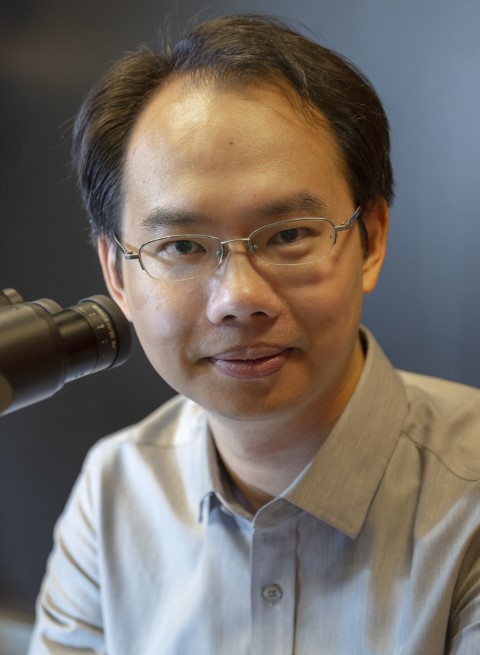
Wei Min, Columbia University
Physical chemist Wei Min, Ph.D., is a leader in the imaging of molecules in biological settings. Despite extensive efforts, many molecules remain unseen inside cells. Using the methods developed in Min’s laboratory, scientists can observe the complexity of natural systems in real-time with much greater detail than ever before. Min has demonstrated methods to observe individual molecules with chemical information, track the motion of small molecules in biological systems with tremendous accuracy, and detect dozens of different molecules simultaneously. The ability to image cells and tissues with this detail could significantly add to our understanding of the cellular world and the progression of disease, and could improve therapeutic tools and drug delivery methods.
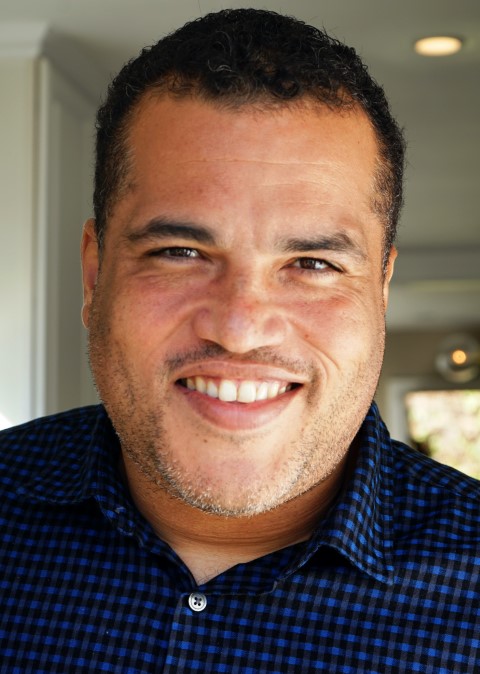
Hosea M. Nelson, University of California, Los Angeles
Hosea M. Nelson, Ph.D., is an organic chemist breaking new ground in synthesizing and characterizing the small organic molecules that serve as precursors to chemicals we use every day, from plastics to medicine. Nelson has contributed to the development of microcrystal electron diffraction (MicroED), a cutting-edge technique that can identify the structure of small molecules faster than ever, which can accelerate the production of new chemicals, like medicine and fuel. He has also discovered new reactions to create beneficial bioactive molecules using more sustainable catalysts, yielding more desired products than conventional catalytic methods. Nelson’s work even applies to medical diagnostics—he is developing next-generation genetic tests for diseases, including COVID-19, that may be faster and less expensive than PCR-based tests.

Sara Skrabalak, Indiana University
Synthesizing materials on the nanoscale is not the only tool scientists have to control a material’s properties. Inorganic and materials chemist Sara Skrabalak, Ph.D., is spearheading new efforts to shape and build the architecture of nanoparticles that can unlock new functionality. Skrabalak‘s methods and techniques can create nanoparticles with beautiful and complex shapes, rivaling even the complexity of snowflakes. She has demonstrated how these new structural features can promote and catalyze reactions, like the splitting of water molecules. Building on her understanding of nanoparticle synthesis, Skrabalak has developed methods for producing nanomaterials at scale and demonstrated the ability to “fingerprint” products using nanoparticles, potentially making counterfeiting more difficult.

Wenjun Zhang, University of California, Berkeley
Chemical engineer Wenjun Zhang, Ph.D., crosses the frontiers of chemical biology and biomolecular engineering in the field of “Natural Products Chemistry”—the study of substances produced by living organisms. Zhang’s research in how natural products behave offers pathways to cure disease and make industry more sustainable. Zhang has discovered novel natural products and tracked their motions in cells, gaining a better understanding of how pathogens behave and how they can be inhibited. Additionally, by studying the biological synthetic reactions of natural products, Zhang has developed a template for synthesizing common chemical precursors from renewable biological sources instead of fossil fuels.
2021 Blavatnik National Awards Finalists in Physical Sciences & Engineering
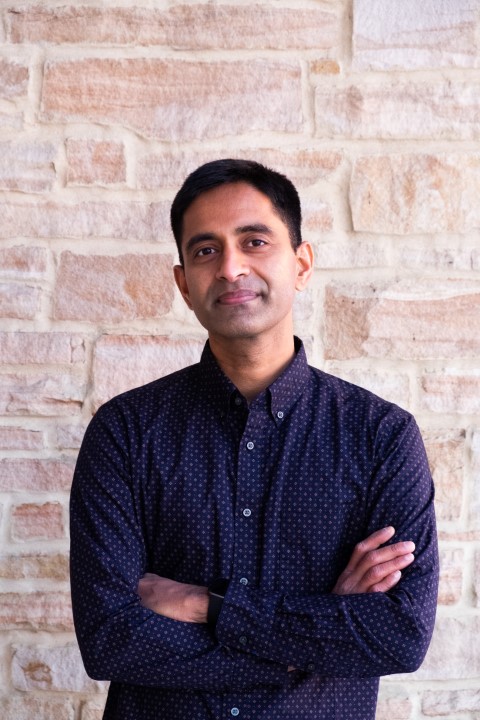
Aditya Akella, University of Wisconsin-Madison
Big data analytics, artificial intelligence, and e-commerce rely almost entirely on a datacenter’s capacity to process vast amounts of information. Aditya Akella, Ph.D., a computer scientist working on large-scale data networks, develops technologies that dramatically improve the speed and efficiency of datacenters while also enhancing the performance and reliability of typically bug-prone datacenter networks. By addressing fundamental challenges in datacenter networks and analytics, Akella’s research will continue to have a profound societal and scientific impact in areas such as health care, particle physics, climate modeling, and national security.
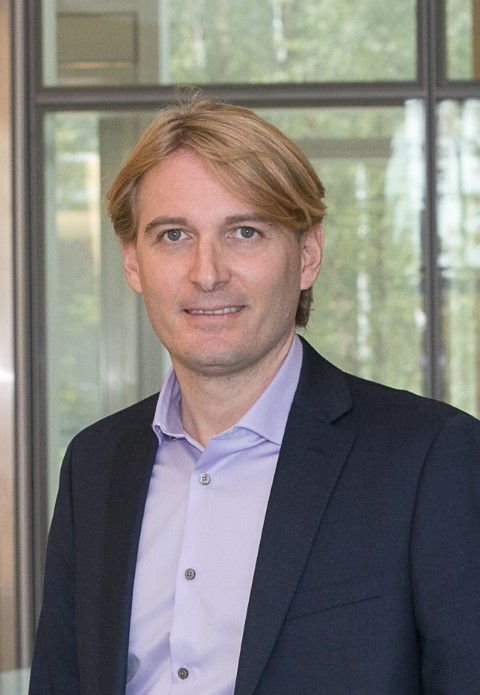
Andrea Alù, Advanced Sciences Research Center, The Graduate Center, The City University of New York
Engineer and physicist Andrea Alù, Ph.D., is challenging the limits of materials science, influencing a wide range of engineering applications in electromagnetics, nano-optics, and acoustics. By tailoring the interactions of electromagnetic and acoustic waves with artificial materials, Alù is demonstrating, both theoretically and experimentally, how cleverly designed nanostructured meta-materials can push the boundaries of physics. His work leads to new and enhanced material technologies with potential applications that include: cellular communications, energy harvesting, radar cloaking, optical computing, and nano-optics.

Kristen Grauman, University of Texas at Austin
Today, the capacity of computer technology to obtain and store images and video has outpaced the human capacity to analyze it effectively. Kristen Grauman, Ph.D., a computer scientist working in computer vision, aims to solve this problem by focusing her research on visual recognition and active perception. Grauman’s research has made large-scale crowdsourcing an indispensable tool for tasks in visual recognition, improved search times by orders of magnitude when searching millions of images, and pushed the frontiers of knowledge linking modern computer vision with robotics.
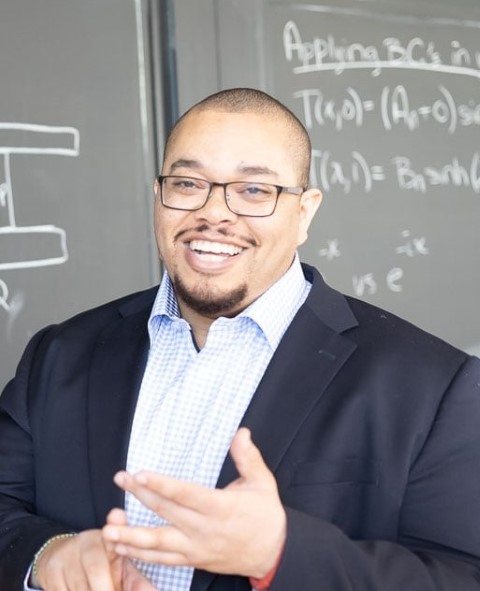
Asegun Henry, Massachusetts Institute of Technology
The unconventional energy storage technologies developed by mechanical engineer Asegun Henry, Ph.D., leverage the low cost of heat to convert and store electricity. The mechanical systems developed by Henry and his team allow extremely hot molten liquid metals, like tin, to be handled at record-breaking temperatures (> 1400°C). This technological breakthrough has enabled new, low-cost applications in renewable energy and fuel production. One such technology, coined “sun in a box,” converts and stores electricity from green energy technologies, like solar and wind, on-demand. His fundamental contributions to the physics of heat transfer are helping researchers re-imagine energy technologies.
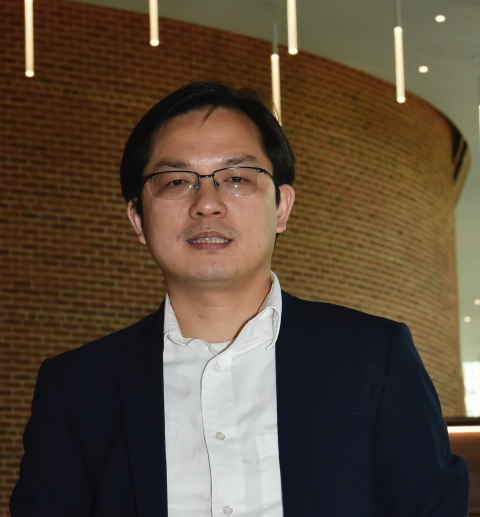
Liangbing Hu, University of Maryland, College Park
Liangbing Hu, Ph.D., is a self-described “wood nanotechnologist”. His research explores the utilization of wood-derived nano-fibers—the most abundant biomaterial on Earth. He has used these nano-fibers to create engineered materials in systems to improve energy efficiency, to desalinate and filter water, and as environmentally-friendly building materials. Hu’s technological innovations have led to the development of a super-strong wood that is similar to steel in strength but six-times lighter, a transparent wood product that can serve as a replacement for glass with five-times better thermal insulation, a wood-based technology that cools a building’s temperature by almost 10°C without electricity, and a low-cost wood and water battery for large-scale energy storage on the electric grid.
Graham Neubig, Carnegie Mellon University
Graham Neubig, Ph.D., is re-shaping our understanding of how computer technologies can be used in applications such as personal assistants, translation apps, and search engines. As a computer scientist studying natural language processing, Neubig has a rich understanding of language and a mastery of the technical methods involved in machine learning. He has made significant contributions to the fundamental science behind applications such as machine translation, speech recognition, and question answering. The open-source software stemming from his research implements techniques used to process words, grammatical structure, and semantics and is widely used by research organizations and tech companies. Neubig’s research may one day make it possible for speakers of 7,000 different languages worldwide to communicate directly with each other, and with computers, in their own words.
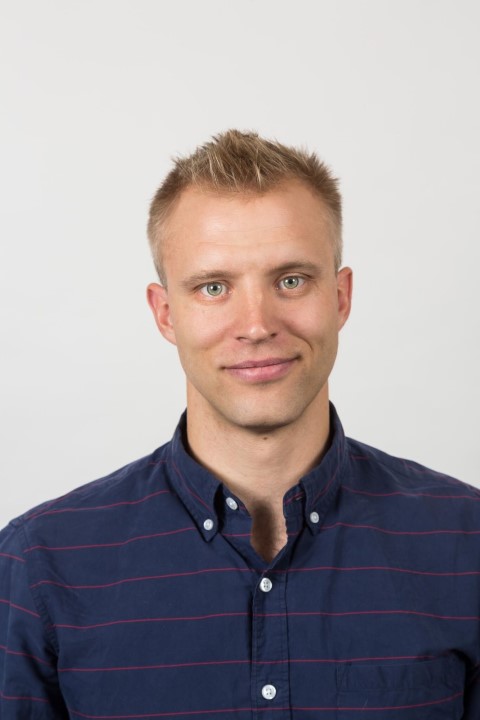
Noah Planavsky, Yale University
Earth and planetary scientist Noah Planavsky, Ph.D. is rewriting the history of biological and environmental evolution on our planet. A scholar at the forefront of geochemical research, Planavsky has resolved long-standing geological mysteries regarding Earth’s evolutionary timeline with the help of novel tools that he developed. Using the rock record as a guide, his work has led to a new view of how the composition of Earth’s atmosphere has changed through time. His research provides the first clear evidence that photosynthesis emerged approximately three billion years ago, much earlier than previously thought, and he has helped shape our understanding of why the Earth has been persistently inhabited for billions of years. His research also lays the foundation for new ground and satellite telescope technologies that may be able to detect oxygen levels and identify potential signs of life on exoplanets beyond our solar system.
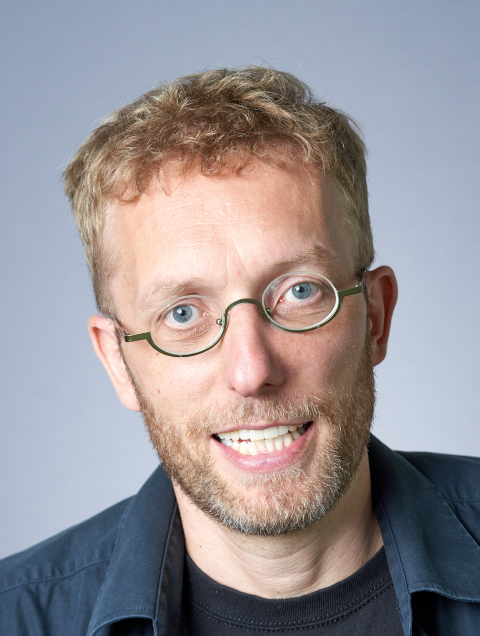
Kilian Weinberger, Cornell University
Computer scientist Kilian Weinberger, Ph.D., has introduced vastly new concepts in the rapidly evolving fields of machine learning and artificial intelligence. His novel approaches to machine learning represent the most radical departure seen in the past 30 years. New techniques, like “feature hashing” and novel neural network architectures—computer algorithms inspired by the brain’s biological structure and function, known as “DenseNets”—have made machine learning algorithms more efficient and have reduced data bias with real-world implications. Cloud services and self-driving car technologies are already using his techniques. His research could soon lead to vast improvements in medical imaging technologies that may facilitate early disease diagnosis.
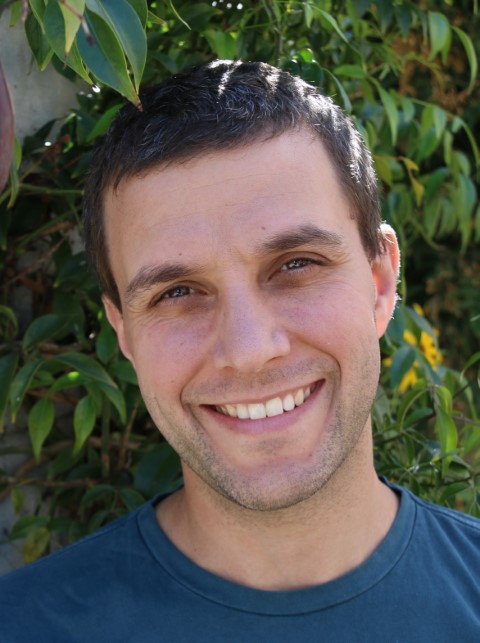
Andrea Young, University of California, Santa Barbara
Physicist Andrea Young, Ph.D., is making waves in the burgeoning field of two-dimensional materials. His work on graphene van der Waals heterostructures—ultrathin materials made of single atomic layers stacked and held together by weak van der Waals forces—has enabled radical new approaches to materials design. The work has led to the experimental discovery of novel electronic phases of matter; for instance, magnets based on the spontaneous synchronization of the orbital motion of electron, and fractional Chern insulators, where electrons break apart to localizing a discrete fraction of their charge on the corners of a lattice. Researchers across the field have adopted the techniques and experimental breakthroughs realized in Young’s lab, which may one day play a significant role in quantum and classical electronic.
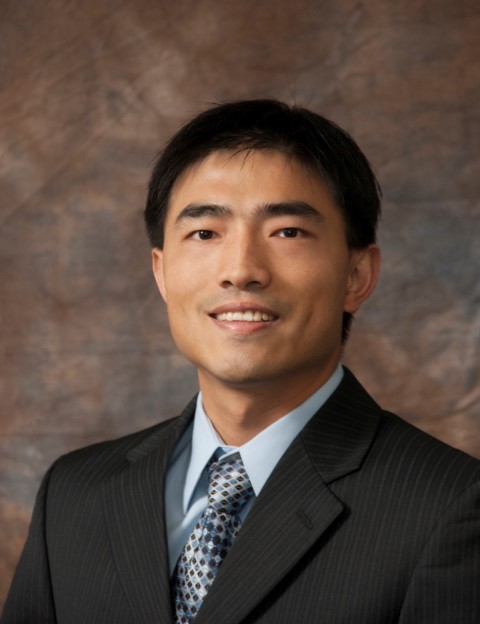
Guihua Yu, University of Texas at Austin
Guihua Yu, Ph.D., a materials scientist and nanotechnologist, focuses on designing and using sustainable polymer technologies to address vital energy and environmental problems facing society. He has created an exciting new line of polymeric materials, called energy hydrogels. Yu has pioneered an unprecedented level of multi-functionality in these materials, including the transmission of electricity via controlling their electron and ion transport. By simply tuning the way the polymer and water molecules interact, Yu’s hydrogel technologies have achieved record-breaking solar evaporation rates—as solar steam generators—in seawater desalination and water purification, solar-powered water-harvesters for sustainable agriculture, and next-generation energy storage materials for flexible, wearable electronics.
###




